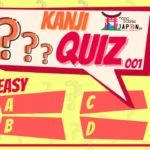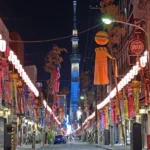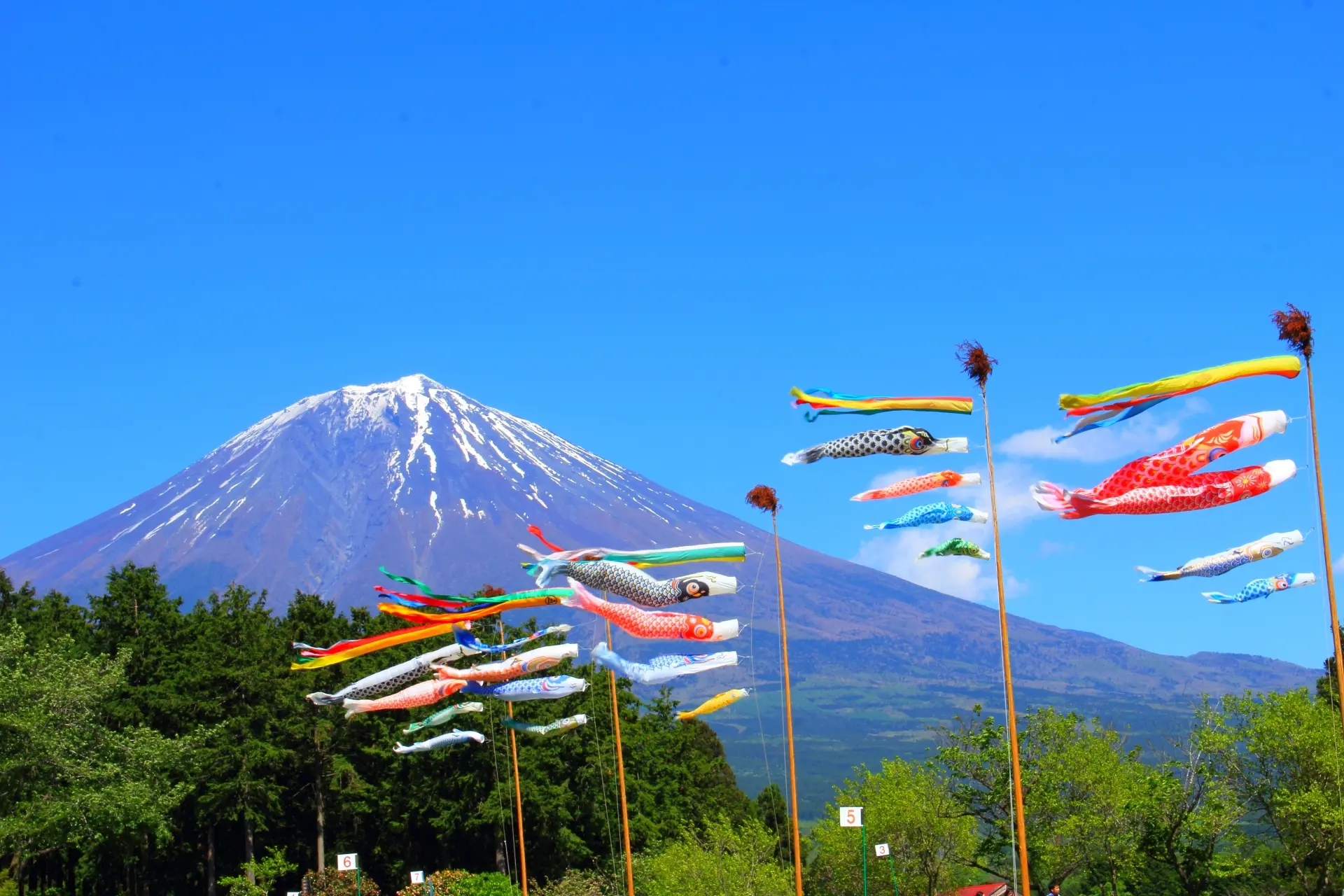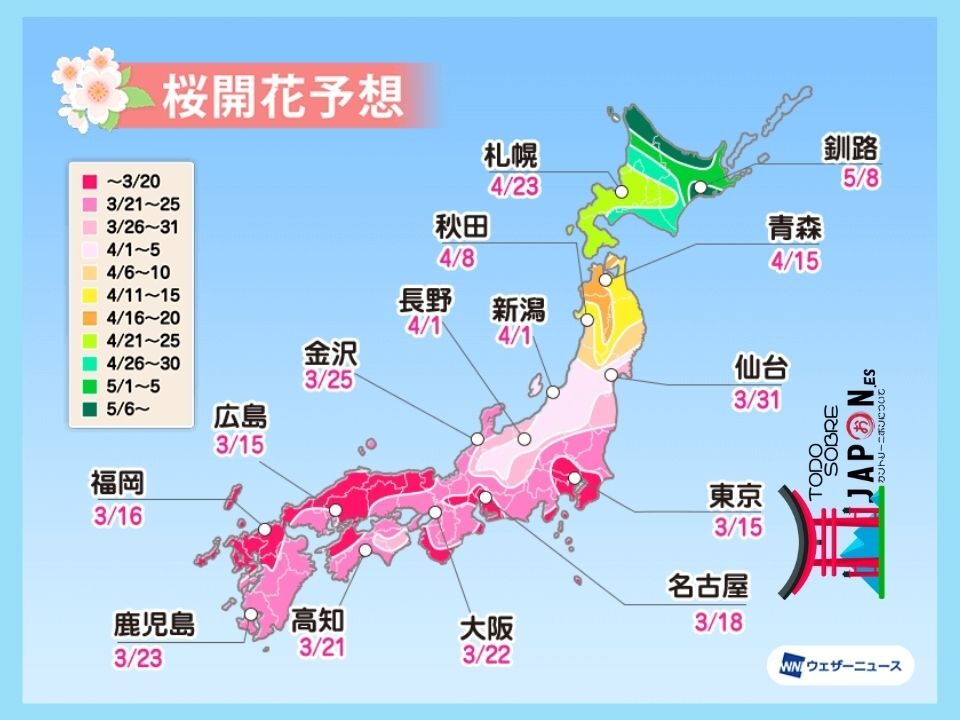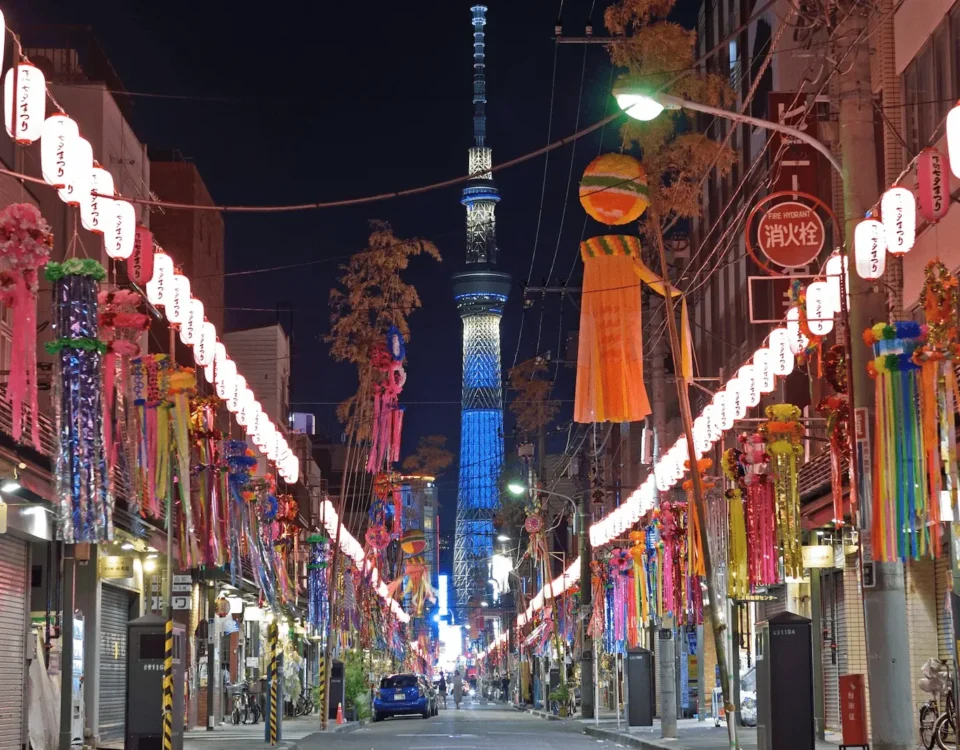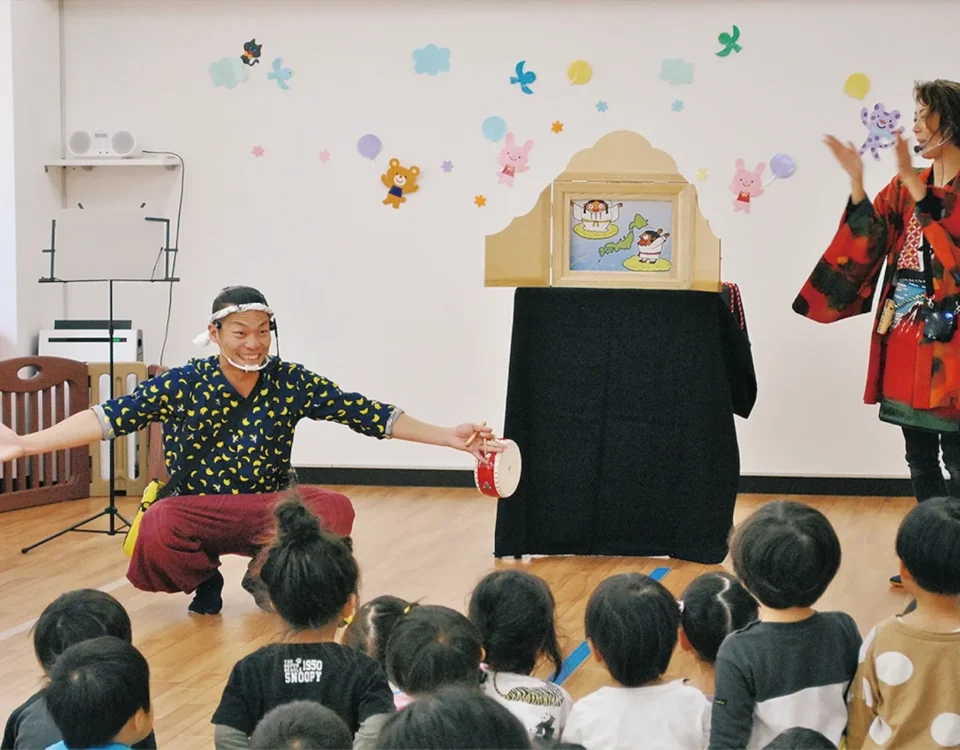May is celebrated as Children’s Day, or Kodomo no Hi (子供の日), and was originally known as Tango no sekku (端午の節句).
History and origin of Kodomo no hi
It became a Japanese national holiday in 1948, but has been a day of celebration in Japan since ancient times. Tango no Sekku was historically established as a festival for boys on the 5th day of the 5th month.
Girls have their own festival, called Hina Matsuri (Doll Festival), which is celebrated on March 3. Like Girls’ Day, the Kodomo no Hi festival is known for its own unique traditions and decorations that are specifically associated with the celebration of the holiday.
When is kodomo no hi or children’s day celebrated in Japan (tango no sekku)?
Kodomo no hi or Children’s Day in Japan is celebrated on May 5 every year, tango no sekku was celebrated on the 5th day of the 5th month.
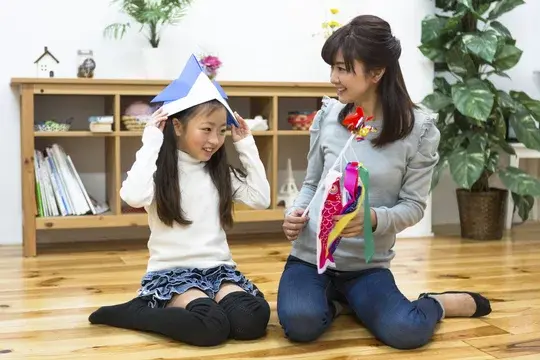
What to do on Children’s Day or kodomo no hi in Japan
On Children’s Day (kodomo no hi), families with sons hoist huge tent-shaped banners (called koinobori) outside the house; the tent symbolizes strength and success.
Many families with sons display helmets and armor of famous warriors and other heroes inside their homes. Throughout Japan, huge koinobori are also hung and displayed on poles outside public buildings to commemorate Children’s Day, kodomo no hi in Japan.
In recent years, as people have moved into smaller apartments and houses, carp streamers have also become smaller, and there are now miniature versions that are decorated indoors, for these tiny apartments.
- Koinobori symbolizes the wish for children to become brave and strong.
- Iris flowers, which bloom in early May, are symbolically placed in houses to ward off evil. In addition, it is customary to take baths known as syobuyu, which are filled with floating iris leaves on kodomo no hi day.
- Rice cakes wrapped in oak leaves and filled with sweet bean paste, called kashiwamochi, are also eaten.
Let’s discover some interesting facts about Kodomo no Hi!
What is Koinobori – Japanese Flying Tent?
According to an ancient Chinese legend, a mixed school of fish attempted to fight their way up a waterfall called “ryumon” (龍門), or Dragon’s Gate. While all the other fish gave up and drifted downstream, the carp persisted and, once inside the Dragon Gate, were transformed into dragons.
Although there are different versions of this age-old tale, the Japanese version matured into a proverb: “koi no taki-nobori” 鯉の滝登り, or koi (Japanese carp) struggling upstream in the waterfall. It was shortened to the current koinobori, the modern name for the famous carp flags.
- The black carp, which is the largest of the koinobori flags, represents the father and is known as the “magoi,” 真鯉.
- The red carp represents the mother (“higoi“, 緋鯉),
- The last tent (usually blue) represents the child (traditionally, the son) with an additional tent added for each younger sibling.
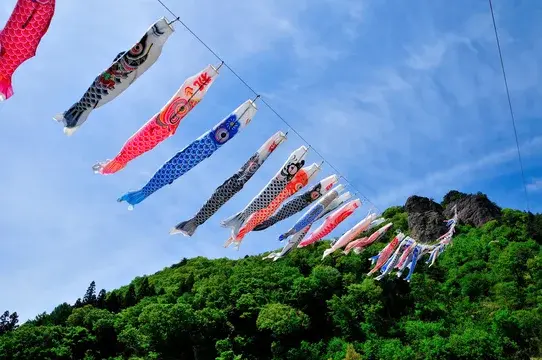
Kabuto and Yoroi – The warrior’s helmet and armor in kodomo no hi
A legend says that kabuto was the inspiration for Darth Vader’s helmet.
The warrior’s helmet is called “kabuto“; and the Japanese stag beetle is also called “kabuto”. It is a play on words, but the “kabuto” helmet bears an uncanny resemblance to the head of the beetle.
Families celebrating Kodomo no Hi also decorate their homes with miniature samurai armor and helmets, representing their wishes to raise strong and powerful boys.
The armor (“yoroi“, 鎧) and helmet (“kabuto“, 兜) form the word “yoroikabuto“, which will often be heard at this time of year.
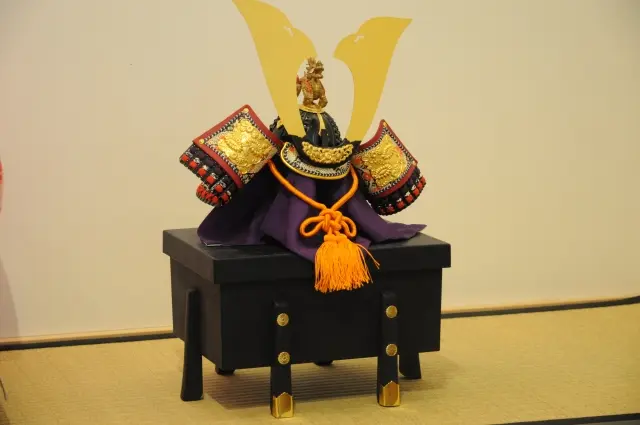
Stories to be read on Children’s Day in Japan or kodomo no hi
Samurai dolls often represent characters from traditional tales such as Kintaro and Momotaro, who symbolize courage and strength.
On this day, children in Japanese households sit together and are told the story of Kintarō, the Golden Child. This is a story of remarkable strength, unmatched bravery and kindness to the animals around him.
The boy, Kintarō, was born to a woman who had to flee the city of Kyoto after the death of her husband, a brave soldier named Kintoki. In the deep woods, he was born, with a strength that could defeat experienced woodcutters.
The mother recognized him and gave her son a woodcutter to play with. The boy was strong enough to ride a bear instead of a horse.
Living in the forest, his instincts were natural for the wilderness and his companions were a bear, a deer, a hare and a monkey. He often challenged their strengths against each other for fun.
Once, after a hearty wrestling match, the companions decided it was getting late and decided to turn back. But they found themselves stranded by a river with no way to cross it.
People often underestimated the young man’s strength. Effortlessly, with only three strokes, Kintarō cut down a large tree by the banks and carried it to the river. With the same ease, he placed the tree with the edges on each bank.
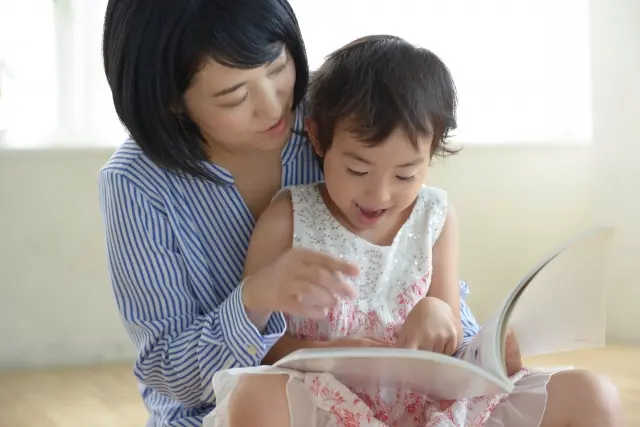
History of the traditional cuisine Kodomo no Hi o tango no sekku
Traditionally, in Japan there are special meals that accompany every holiday or occasion, and Children’s Day, kodomo no hi, is no exception.
The Japanese cook chimaki (粽) for this holiday, which is a rice cake made of steamed sticky rice, or mochigome (餅米), wrapped in a bamboo leaf and kashiwamochi (柏餅), which is a Japanese sweet that is wrapped in oak leaf.
Who is Chimaki (粽) kodomo no hi
Chimaki is made from steamed sticky rice, beautifully and artistically wrapped in bamboo leaves and secured with twine. Other Japanese use different types of leaves to enhance the aroma of chimaki. The style and shape of the wrapping differs depending on the region in which the chimaki is prepared.
There are 2 types of chimaki:
- The first is sweet chimaki, made with a jelly called yokan.
- The 2nd is the salty chimaki with meat and vegetables.
Salty chimaki dessert is usually available year-round, and sweet chimaki is in demand around Children’s Day in Japan or kodomo no hi.
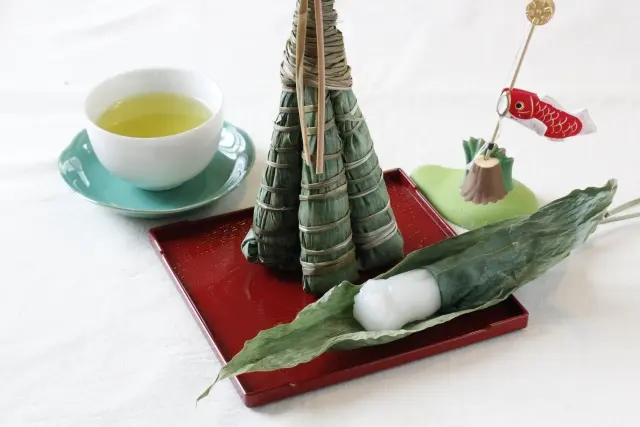
What is Botamochi o ohagi (ぼたもち) tango no sekku
Botamochi is a sweet rice ball wrapped with tsubuan (which is a red bean paste) or sprinkled with kinako (soybean flour) or kurogoma (black sesame seeds).
These sweets are called botamochi during the spring (vernal equinox) and are also more commonly known as ohagi, which are offered during the autumn equinox, but are available all year round.
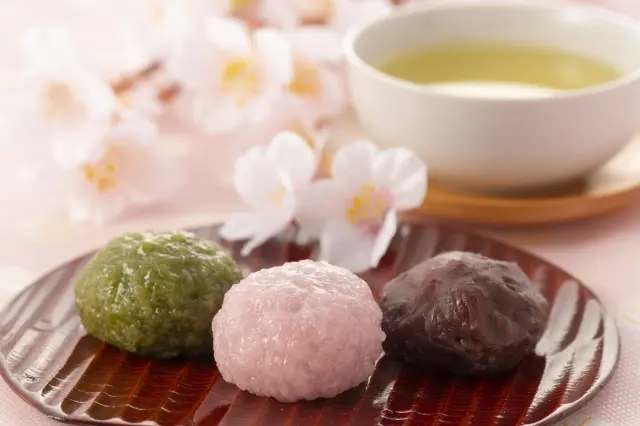
What is Kashiwamochi (柏餅) Children’s Day in Japan?
Kashiwamochi is a Japanese sweet stuffed with red beans that is wrapped in oak leaves. Although the leaves are not edible (don’t even think of eating them), they give kashiwamochi, tender cakes a unique earthy flavor.
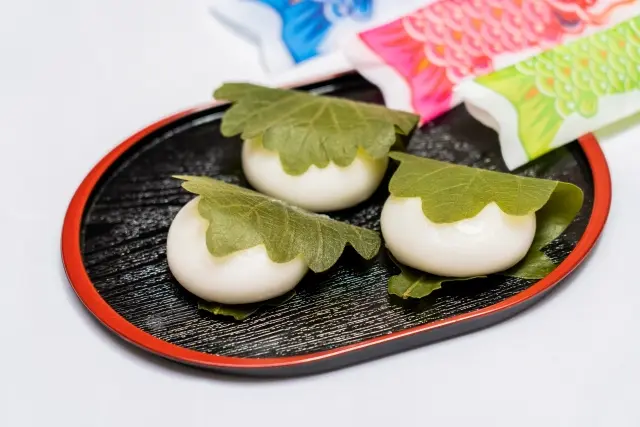
Curiosities of kodomo no hi
In Kodomo no hi, koinobori, or carp cloth streamers, are waved on poles outside public buildings and private homes to attract luck and good fortune to the children inside (the male children of families).
Koi fish, or carp, are believed to be strong and spirited fish and are revered for their determination to fight by swimming upstream and through mighty waterfalls, as we recounted in the legend above.
Why is kodomo no hi celebrated?
Kodomo no hi, celebrates the health, happiness and individuality of children and is considered important in Japan because they represent the future of the country. Kodomo no Hi or Japanese Children’s Day is a national holiday in Japan and is celebrated on May 5.
If you are seeing tent-shaped wind socks in the air, you know that Golden Week is coming up all over Japan. This 1-week celebration ends with the colorful and highly anticipated Kodomo No Hi, Children’s Day.
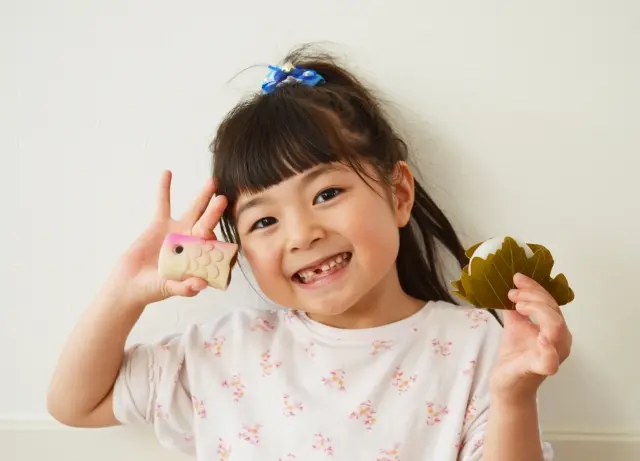
What children do in the old tango no sekku or in the current kodomo no hi
Parents sit their children at the tables, hand them large pieces of colorful tissue paper that resemble kites along with images of real tent flags and felt-tipped pens and a bundle of wool string to play with.
They can play with scales, multiple shapes and colors. Adding finishing touches with eyes, tongue and even caudal fins with lots of color.
Even adults get into origami and kirigami (paper folding and cutting) along with their kids and create vibrant looking fish – the final product attaches to a long straw and holds through the water to make it look like it’s swimming!
Traditions of kodomo no hi (shōbuyu)
- One of the other traditions of Kodomo no Hi is to measure the child’s growth every year. On this occasion at least once, parents have their children create a booklet where they can mark their growth.
It is called ‘How I grow up’. The book also details the things learned, the food and dishes the child enjoys the most, etc, something similar to what we Westerners use for our children’s growth and goals.
- One of the other customs includes taking an iris-infused bath. This bath is called shōbuyu.
Let’s talk about the tradition of bathing with iris or mugwort flowers (as we said at the top of this post) These flowers are used because the pointed shape of the leaves resembles the shape of samurai swords that will fight any evil.
The strong, aromatic fragrance is believed to act as an exorcist against any evil spirits lingering around the child.
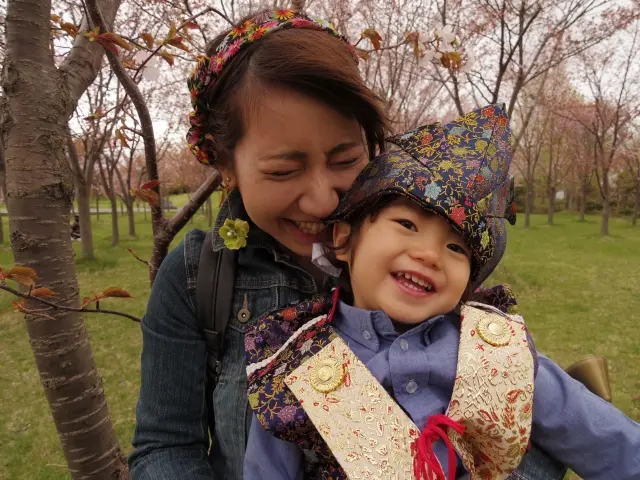
These baths are given to the children of the household in the hope that they will live a safe, disease-free life and become as strong as a samurai.
Freshly cut iris leaves are purchased from supermarkets or flower shops and soaked in a Japanese bath called ofuro.
Some Japanese households grow their own iris flowers in their gardens just for Kodomo no Hi and harvest them at the right time for bathing.
Some Japanese baths around the country allow children to use them for free on Children’s Day.
– When you go on a trip what we like most as travelers is to have the best possible experiences, so these activities that I show you below, can be the best experiences you will have on your trip to JAPAN.

